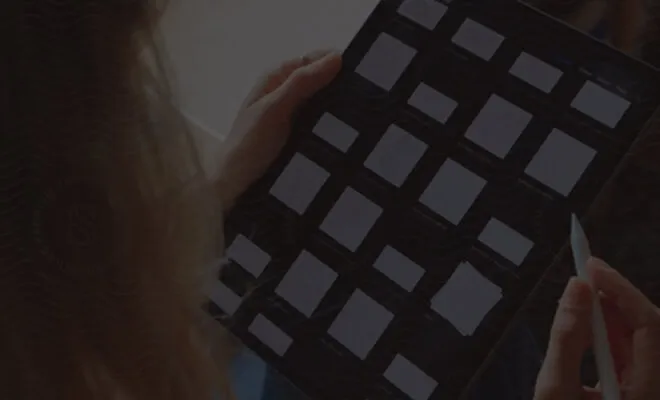Customize PDF view margins using Swift for iOS
Adjust the document view margins to make room for your custom user interface elements. Get additional resources by visiting our guide on customizing the display of PDFs in iOS with the view hierarchy.
//// Copyright © 2016-2025 PSPDFKit GmbH. All rights reserved.//// The Nutrient sample applications are licensed with a modified BSD license.// Please see License for details. This notice may not be removed from this file.//
import PSPDFKitimport PSPDFKitUI
class DynamicMarginsExample: Example {
override init() { super.init() title = "Margin Customization Example" contentDescription = "Shows how adjust the content for your custom user interface elements." category = .controllerCustomization }
override func invoke(with delegate: ExampleRunnerDelegate) -> UIViewController? { let document = AssetLoader.document(for: .welcome) let pdfController = CustomUserInterfaceController(document: document) { $0.pageTransition = .curl $0.userInterfaceViewMode = .always $0.thumbnailBarMode = .none } return pdfController }
// MARK: - View controller
class CustomUserInterfaceController: PDFViewController {
override func viewDidLoad() { super.viewDidLoad() setUpBottomBar() }
// MARK: Bottom bar
let bottomBar = CustomBottomBar()
private func setUpBottomBar() { bottomBar.toggleButton.addTarget(self, action: #selector(togglePressed), for: .touchUpInside) bottomBar.translatesAutoresizingMaskIntoConstraints = false userInterfaceView.addSubview(bottomBar)
let views = ["bottomBar": bottomBar] NSLayoutConstraint.activate(NSLayoutConstraint.constraints(withVisualFormat: "|-0-[bottomBar]-0-|", options: NSLayoutConstraint.FormatOptions(rawValue: 0), metrics: nil, views: views)) NSLayoutConstraint.activate(NSLayoutConstraint.constraints(withVisualFormat: "V:[bottomBar]-0-|", options: NSLayoutConstraint.FormatOptions(rawValue: 0), metrics: nil, views: views))
updateCongigurationForBottomBar() }
@objc private func togglePressed() { bottomBar.expanded = !bottomBar.expanded updateCongigurationForBottomBar() }
private func updateCongigurationForBottomBar() { let bottomBarInset = bottomBar.intrinsicContentSize.height // Note changing the margin requires updateConfigurationWithBuilder (a reload). updateConfiguration { $0.additionalScrollViewFrameInsets = UIEdgeInsets(top: 0, left: 0, bottom: bottomBarInset, right: 0) } // Lets also move the page label above the bottom bar. userInterfaceView.pageLabelInsets = UIEdgeInsets(top: 0, left: 5, bottom: 10 + bottomBarInset, right: 5) } }
// MARK: - User Interface view
class CustomBottomBar: UIView {
override init(frame: CGRect) { super.init(frame: frame) setUpViews() }
required init?(coder aDecoder: NSCoder) { super.init(coder: aDecoder) setUpViews() }
private func setUpViews() { backgroundColor = UIColor.catalogAccent.withAlphaComponent(0.7)
toggleButton.setTitle("Expand / Collapse", for: UIControl.State()) toggleButton.translatesAutoresizingMaskIntoConstraints = false addSubview(toggleButton)
NSLayoutConstraint(item: toggleButton, attribute: .centerX, relatedBy: .equal, toItem: self, attribute: .centerX, multiplier: 1, constant: 0).isActive = true NSLayoutConstraint(item: toggleButton, attribute: .centerY, relatedBy: .equal, toItem: self, attribute: .centerY, multiplier: 1, constant: 0).isActive = true }
// MARK: State
let toggleButton = UIButton(type: .custom)
var expanded = false { didSet { invalidateIntrinsicContentSize() } }
// MARK: Layout
override var intrinsicContentSize: CGSize { return CGSize(width: UIView.noIntrinsicMetric, height: expanded ? 44 * 3 : 44) } }}This code sample is an example that illustrates how to use our SDK. Please adapt it to your specific use case.




